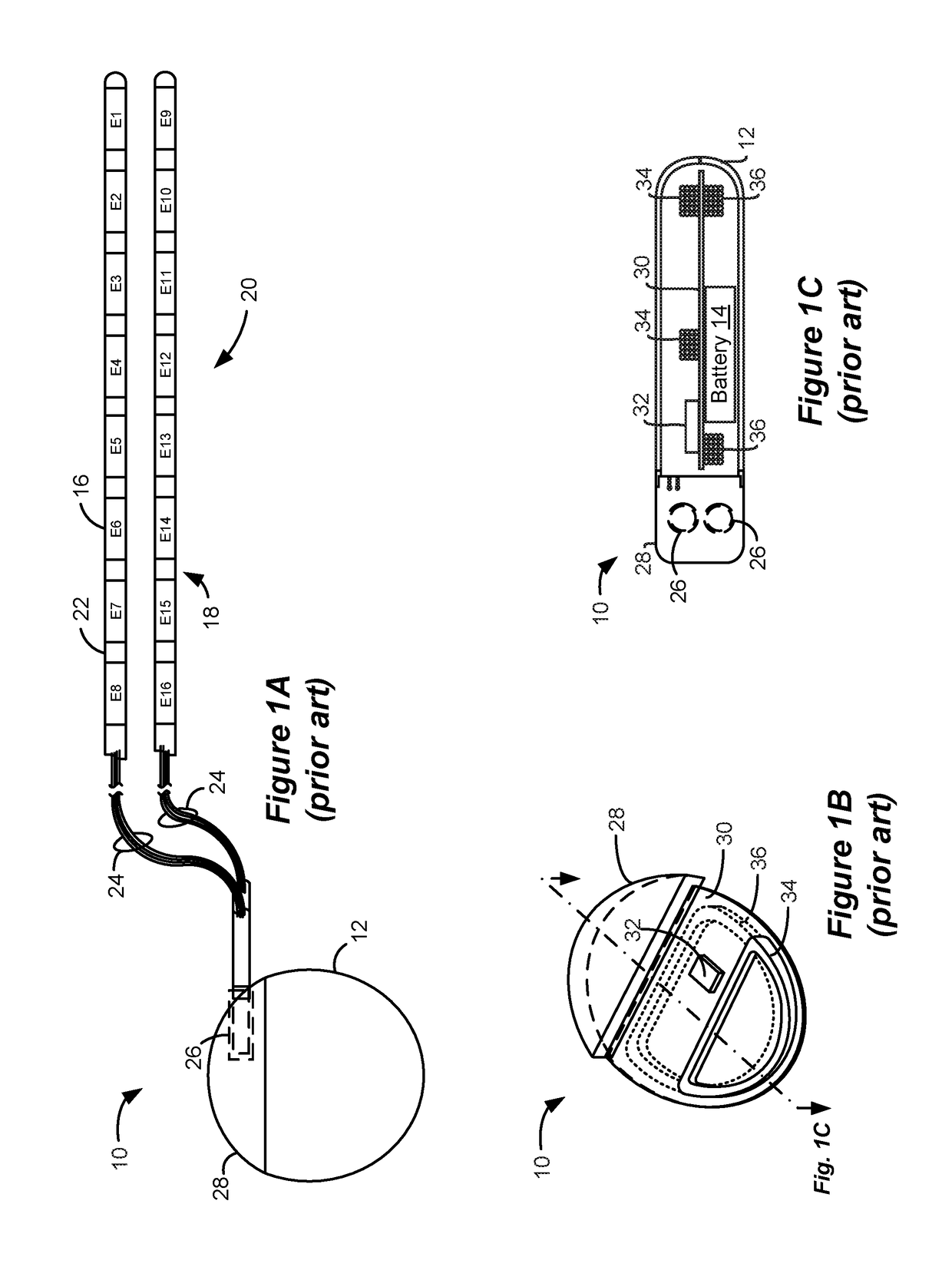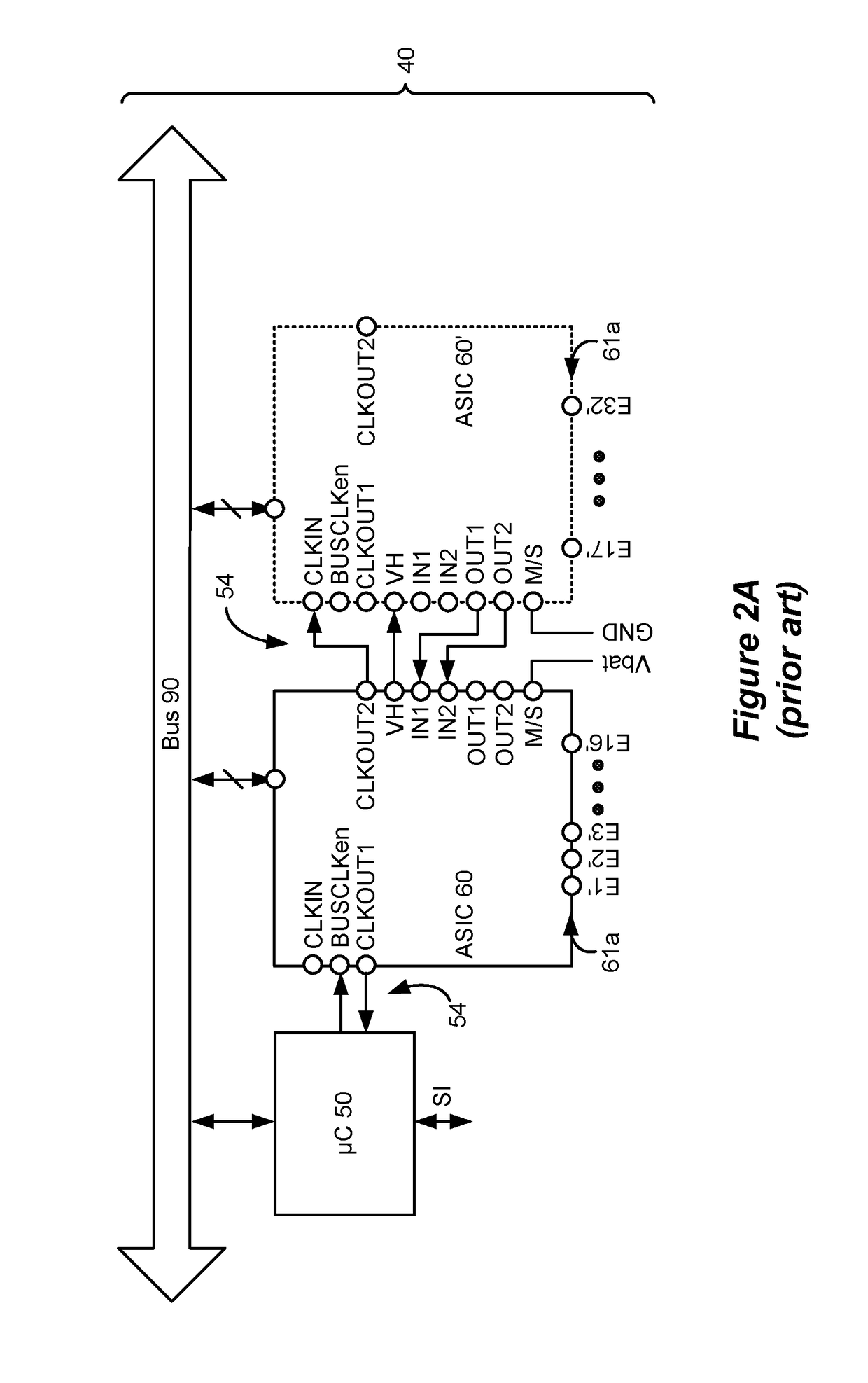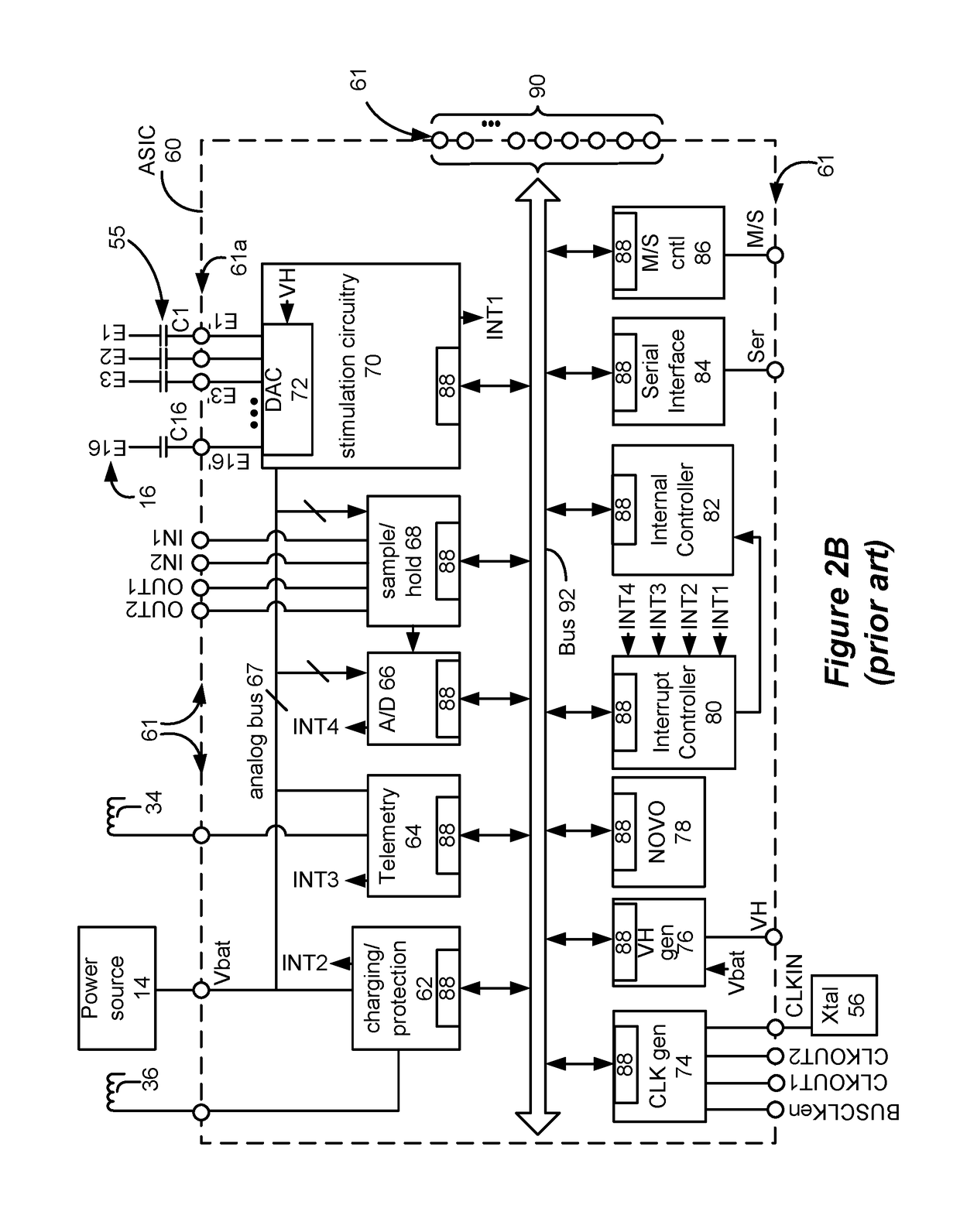Current Generation Architecture for an Implantable Stimulator Device to Promote Current Steering Between Electrodes
a current generation and stimulator technology, applied in the field of medical devices, can solve problems such as imperfect active recovery
- Summary
- Abstract
- Description
- Claims
- Application Information
AI Technical Summary
Benefits of technology
Problems solved by technology
Method used
Image
Examples
Embodiment Construction
[0044]FIGS. 4A and 4B show an improved architecture 140 and ASIC 160 for an IPG such as IPG 10 described earlier. Elements in architecture 140 and ASIC 160 that can remain unchanged from the prior art architecture 40 and ASIC 60 described in the Introduction bear the same elements numerals, and are not described again.
[0045]Improved ASIC 160 includes a microcontroller block 150 as part of its monolithic structure, which as shown in FIG. 4B can communicate with other functional blocks in the ASIC 160 via internal bus 92. Because ASIC 160 includes an internal microcontroller 150, an external microcontroller (e.g., 50, FIG. 2A) can be dispensed with in the improved architecture 140, simplifying IPG design and saving room within the interior of the case 12 and on the IPG's PCB 30 (FIG. 1C).
[0046]Microcontroller block 150 may receive interrupts independent of the bus 92 and its communication protocol, although interrupts may also be sent to the microcontroller 150 via the bus 92 as well....
PUM
 Login to View More
Login to View More Abstract
Description
Claims
Application Information
 Login to View More
Login to View More - R&D
- Intellectual Property
- Life Sciences
- Materials
- Tech Scout
- Unparalleled Data Quality
- Higher Quality Content
- 60% Fewer Hallucinations
Browse by: Latest US Patents, China's latest patents, Technical Efficacy Thesaurus, Application Domain, Technology Topic, Popular Technical Reports.
© 2025 PatSnap. All rights reserved.Legal|Privacy policy|Modern Slavery Act Transparency Statement|Sitemap|About US| Contact US: help@patsnap.com



